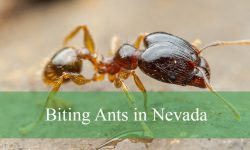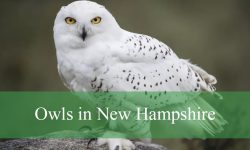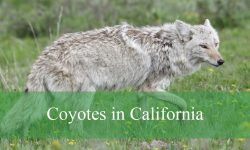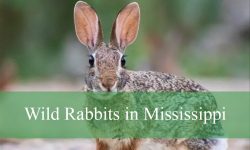Texas has many kinds of birds, but some are very rare and special. These rare birds of Texas are colorful and hard to find, attracting birdwatchers from all over who want to see them.
Some of these rare birds come from tropical places, like the Amazon Kingfisher, while others, like the Golden-cheeked Warbler, only live in Texas. They mostly live in certain areas, such as the Lower Rio Grande Valley or central Texas.
This article shows you the top 10 rare birds of Texas with pictures and easy tips to help you recognize them. Learning about these birds helps you appreciate the unique wildlife that lives in Texas.
Discover Texas’ Most Elusive and Exotic Bird Species
Elegant Trogon (Trogon elegans)
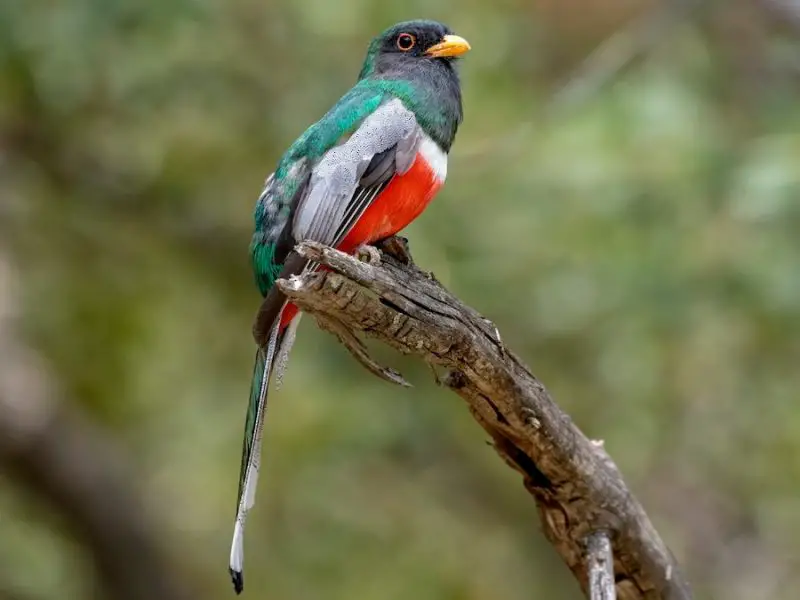
The Elegant Trogon is a stunningly colorful bird more often associated with the lush forests of Mexico and Central America. Its radiant plumage makes it one of the most breathtaking tropical birds to be seen in the United States. Males feature a shimmering emerald-green back and head, a deep red belly, and a sharply contrasting white chest band. Their long, squared-off tail with bold black-and-white patterning is equally distinctive.
This species is medium-sized, measuring approximately 11 to 12 inches in length. It has a thick, hooked yellow bill and large eyes adapted for foraging in dim forest canopies. Despite its vibrant colors, the Elegant Trogon can remain surprisingly elusive as it perches quietly in the shade, often going unnoticed until it flies. Its call is a series of soft, throaty croaks, which can be the best clue to its presence.
The Elegant Trogon is known for its reclusive behavior and preference for dense woodlands, especially areas with sycamore, oak, and mesquite trees. They feed mainly on insects, small fruits, and sometimes lizards, which they catch while making quick aerial sallies from a perch. Unlike many songbirds, the Elegant Trogon nests in natural cavities or abandoned woodpecker holes.
In Texas, this species is considered a rare but regular visitor to the Lower Rio Grande Valley, especially in places like Santa Ana National Wildlife Refuge and Bentsen-Rio Grande Valley State Park. Sightings are more likely in late fall through early spring when individuals may wander north of their normal range. Birders often travel from far distances for a chance to glimpse this tropical beauty during one of its infrequent appearances.
Blue Bunting (Cyanocompsa parellina)
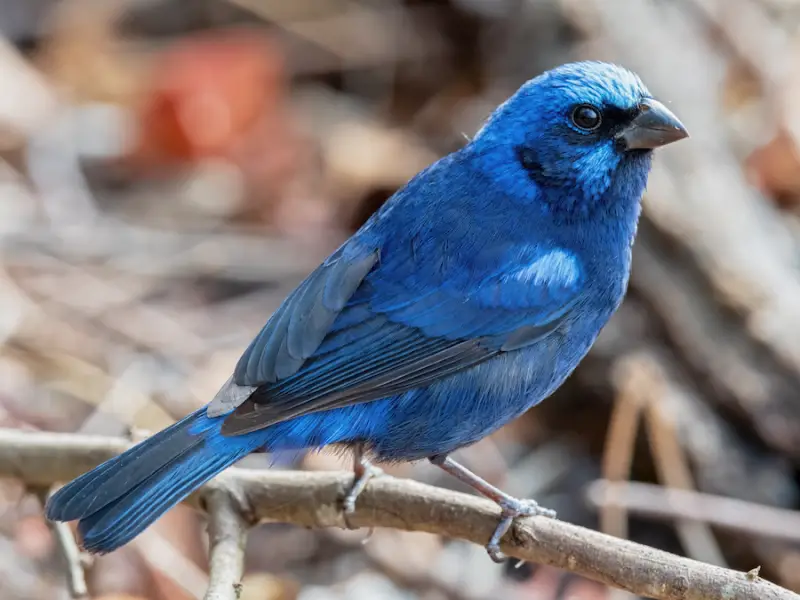
The Blue Bunting is a small, elusive songbird that adds a splash of deep, saturated blue to the southern Texas brushlands. Native to Mexico and parts of Central America, it is considered a rare vagrant to the U.S., with only occasional appearances in the far southern parts of Texas. Its overall appearance is striking yet easy to confuse with more common buntings if not closely observed.
Adult males are entirely dark blue, with plumage that appears nearly navy or purplish in dim light. Unlike the Indigo Bunting, which has a lighter, more vibrant blue, the Blue Bunting’s hue is richer and darker, especially on the head and back. Females, in contrast, are a dull brown with faint warm tones, making them particularly hard to spot in their brushy surroundings. Both sexes have a conical bill typical of seed-eating songbirds.
These birds are typically shy and reclusive, foraging low in dense undergrowth or along the edges of thick brush. Their diet consists mostly of seeds, berries, and small insects. During courtship, males may sing from concealed perches but are generally quieter and more secretive than other bunting species. Their movements are often erratic, making them difficult to track.
In Texas, sightings are concentrated in the Lower Rio Grande Valley, particularly in Hidalgo and Starr counties. Hotspots like Quinta Mazatlan and the trails at Resaca de la Palma State Park have recorded occasional visits. The best chance to see a Blue Bunting is from late winter into early spring, when migrants are more likely to stray north of their normal range. Birders often need luck and patience to catch a glimpse of this rare and beautiful visitor.
Crimson-collared Grosbeak (Rhodothraupis celaeno)
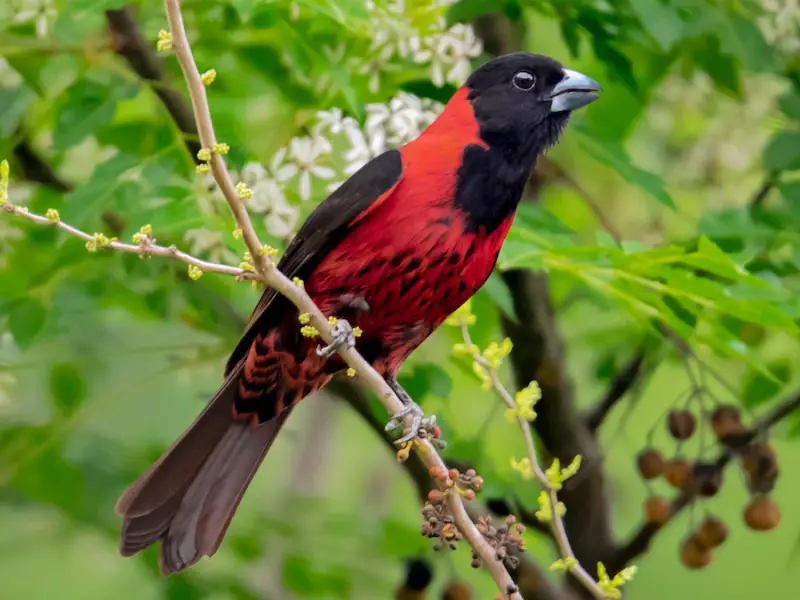
The Crimson-collared Grosbeak is a striking and rare visitor from eastern Mexico, easily recognized by its bold contrast of colors. Adult males are predominantly jet black with a vivid crimson red collar, breast, and crown that glows in the sunlight. This unique color pattern makes it one of the most eye-catching songbirds to ever show up in the U.S. Though females are more muted, they still show the trademark red and black coloration in a less intense form.
This bird is fairly large for a grosbeak, measuring about 8.5 to 9 inches long, with a strong, thick bill adapted for cracking seeds. Its robust shape, along with its intense colors, make it unmistakable when seen clearly. The bill is bluish-gray, and the eyes are dark, often giving the bird a stern expression. It tends to perch in a hunched posture, often in dense foliage where it can stay hidden despite its bright plumage.
The Crimson-collared Grosbeak is known for its quiet, deliberate movements. It feeds on seeds, berries, and insects, often foraging slowly in low to mid-level vegetation. It may travel alone or in pairs and is not as social or vocal as some other grosbeaks. Its song is a series of soft whistles, while its call is a short “chip” or “tink” note that can be difficult to hear.
In Texas, it is considered a mega-rarity, with most sightings occurring in the Lower Rio Grande Valley, especially during the winter months. Santa Ana NWR, Valley Nature Center, and Sabal Palm Sanctuary have all reported sightings in recent years. Birders from across the country often travel to Texas hoping to see this rare Mexican species when one is reported within U.S. borders.
Amazon Kingfisher (Chloroceryle amazona)

The Amazon Kingfisher is a rare and impressive tropical bird, native to Central and South America, that occasionally strays into south Texas. As its name suggests, it is larger and more powerful than most kingfishers found in the U.S., especially when compared to its close relative, the Green Kingfisher. Its robust size and striking features make it a dream sighting for birdwatchers in North America.
This species measures about 12 to 13 inches in length, making it nearly the size of a Belted Kingfisher. Males have dark green upperparts, a white throat, and a broad chestnut band across the chest. Females lack the chestnut band but may show some green spotting on the flanks. Both sexes have a prominent shaggy crest, white collar, and long, heavy black bill suited for catching fish.
Amazon Kingfishers favor freshwater habitats like rivers, canals, and oxbow lakes, where they perch quietly before diving for fish. Their fishing technique involves scanning the water from an overhanging branch or snag, then plunging in headfirst to snatch prey with precision. Unlike some kingfishers, they tend to be less vocal, though they may issue a rattling call when flushed.
In Texas, only a handful of records exist, mostly from the Lower Rio Grande Valley near Brownsville and the surrounding wildlife refuges. The best chances to see one are in late fall or winter when individual birds may wander north from Mexico. Locations like Resaca de la Palma and Sabal Palm Sanctuary have hosted rare appearances, thrilling birders with this tropical surprise.
Rose-throated Becard (Pachyramphus aglaiae)
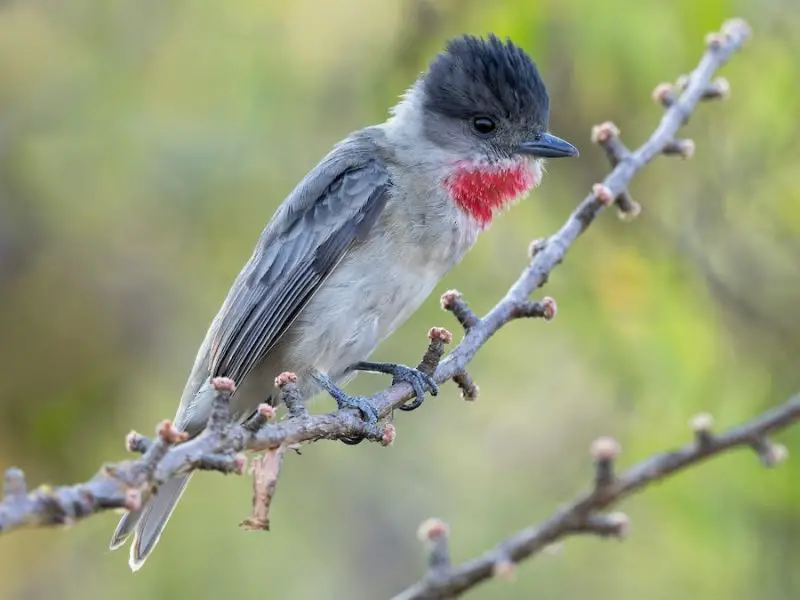
The Rose-throated Becard is an uncommon and intriguing bird that inhabits wooded areas of southern Texas, particularly in mature riparian forests. This species is more commonly found in Mexico and Central America but makes occasional appearances in the U.S., where its subtle beauty and unique nesting behavior capture the attention of birdwatchers.
Adult males are mostly gray with a soft rose-pink throat patch, which may appear white or faint depending on lighting. Females are olive-gray above with a warm buff underside and a distinct facial pattern that includes a pale eyebrow. Both sexes have relatively large heads, short necks, and slightly hooked bills, giving them a distinctive silhouette when perched.
Rose-throated Becards are known for their impressive hanging nests, which are large, globular structures suspended from high tree branches, often over water. These nests are built by the female and can be up to two feet long, made from grasses, moss, and other plant fibers. The species feeds on insects, spiders, and small fruits, typically foraging slowly among the foliage or making short aerial sallies.
In Texas, sightings are scattered and irregular but most often occur in places like Santa Ana National Wildlife Refuge, Bentsen-Rio Grande Valley State Park, and the riparian corridors of the Rio Grande. Late spring and summer are the most likely times to encounter them during the breeding season. Though never common, patient observers may be rewarded with views of this graceful and secretive bird near the canopy.
Golden-cheeked Warbler (Setophaga chrysoparia)
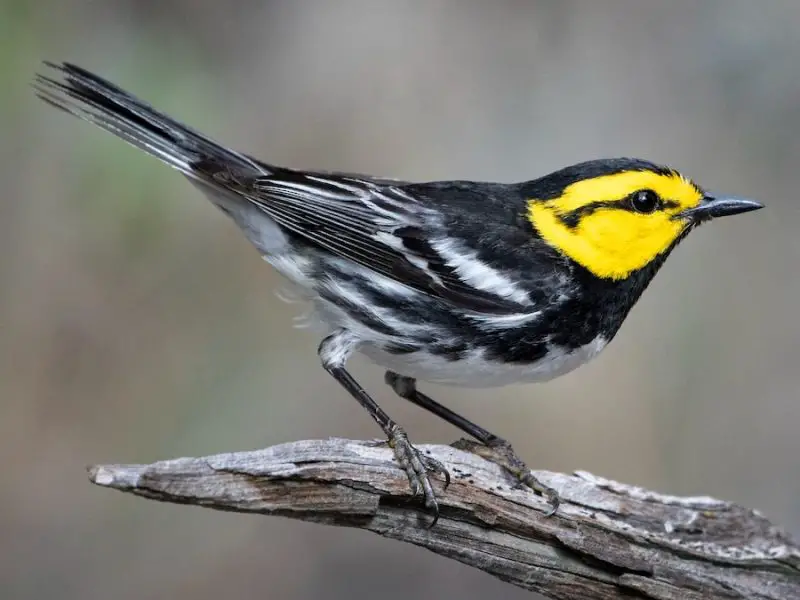
The Golden-cheeked Warbler is one of the most iconic birds of Texas, known not only for its brilliant appearance but also for its highly restricted range. This species is endemic to Texas, meaning it breeds nowhere else in the world. Its status as a federally endangered bird has made it a symbol of Texas conservation efforts. With its black crown, back, and throat contrasted by a bright yellow face and white underparts, it is both bold and beautiful.
Golden-cheeked Warblers measure around 4.5 to 5 inches in length and have a relatively slender build. Males are more strikingly patterned than females, especially during the breeding season. Their high-pitched buzzy songs echo through oak-juniper forests in spring and early summer. The yellow cheeks, framed by black, are one of the easiest ways to identify this warbler, especially when combined with their quick, fluttery movements through the canopy.
This species nests exclusively in central Texas woodlands where mature Ashe juniper (commonly called mountain cedar) and oak trees coexist. It uses strips of juniper bark to build its nest, typically placing it high in the canopy. The warbler’s diet consists primarily of insects and caterpillars, which it gleans from foliage while actively moving between branches. It is a shy bird, often heard before it is seen.
Best seen from March through early July, the Golden-cheeked Warbler can be found in areas like the Balcones Canyonlands National Wildlife Refuge, Pedernales Falls State Park, and private ranches with preserved habitat. Because of ongoing habitat loss and fragmentation, this warbler remains under threat, making every sighting in the Texas Hill Country both rare and meaningful for birders and conservationists alike.
Ferruginous Pygmy-Owl (Glaucidium brasilianum)
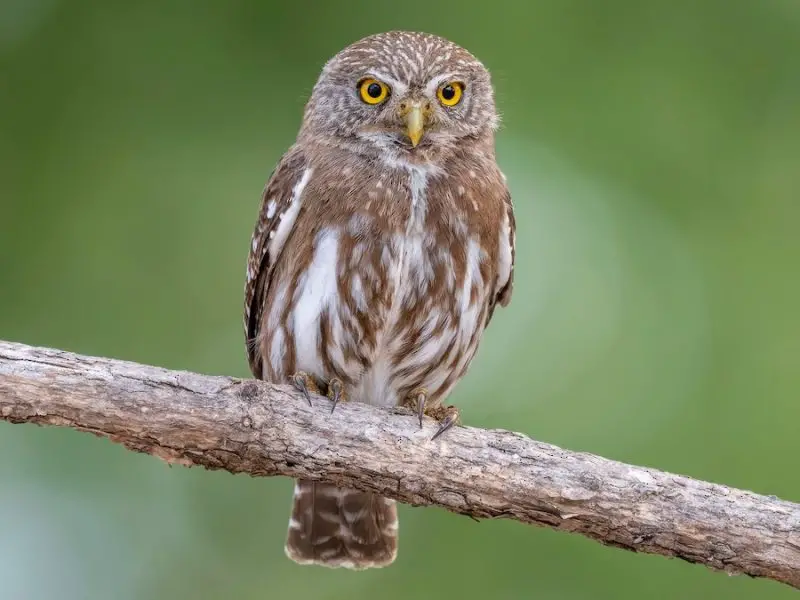
The Ferruginous Pygmy-Owl is a tiny, fierce predator that once had a more secure foothold in southern Texas. Today, it is considered extremely rare in the state, with only a few scattered sightings reported each year. This species, which is more common in Mexico and Central America, is known for its small size, large head, and confident demeanor. At just 6 to 7 inches tall, it is one of the smallest owls in North America.
This owl has a warm brownish coloration with fine barring across its underparts and tail. Its most striking features include large yellow eyes and two dark eye-spots on the back of its head, which help deter predators. Unlike many other owls, the Ferruginous Pygmy-Owl is active not only at night but also during dawn and dusk, and sometimes even in daylight. Its call is a long series of soft, repetitive hoots that can be surprisingly far-reaching.
It prefers dense thornscrub and mesquite thickets, especially in brushy lowland areas that are increasingly under threat from development. This species feeds primarily on insects, small birds, and lizards, using its speed and agility to ambush prey. Despite its tiny size, it is a fierce and efficient hunter and has been known to take prey nearly as large as itself.
In Texas, this owl’s stronghold was historically in deep South Texas, particularly in Starr and Hidalgo counties. However, sightings have become increasingly rare over the past few decades due to habitat degradation. The Santa Ana and Laguna Atascosa National Wildlife Refuges still represent some of the best chances to spot one, typically during the warmer months. Any sighting of a Ferruginous Pygmy-Owl in Texas is notable and draws significant attention from birdwatchers.
Green Jay (Cyanocorax yncas)
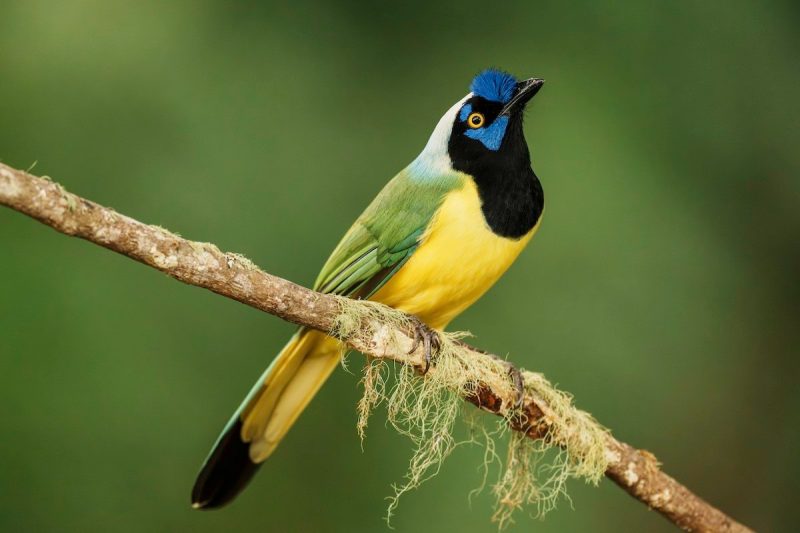
The Green Jay is a vividly colored, tropical corvid that turns heads wherever it appears. While it may not be considered rare within the Lower Rio Grande Valley, it is entirely absent from the rest of the United States, making it a prized bird on many North American life lists. Its blend of emerald green, bright yellow, turquoise blue, and black facial markings makes it look almost unreal in appearance.
This jay measures about 11 to 12 inches long, with a long tail and bold coloration that distinguishes it from any other bird in the region. The head features a black mask, bright blue crown, and throat patch, while the underparts are a rich yellow. Their eyes are dark, and their strong black bill is well-adapted for a varied omnivorous diet. Males and females look alike, and both participate in raising young.
Green Jays are social and highly intelligent birds. They often forage in family groups, using vocalizations and gestures to coordinate movement and warn each other of danger. Their diet includes insects, fruits, seeds, and even small reptiles or nestlings. They are known for caching food and can be seen actively exploring foliage or the forest floor. Their calls are loud, varied, and include whistles, chattering, and harsh squawks.
This species is found only in the southern tip of Texas, especially in wooded and brushy areas of Hidalgo, Starr, and Cameron counties. Locations such as Bentsen-Rio Grande Valley State Park, Estero Llano Grande State Park, and Santa Ana NWR offer excellent opportunities to see them. Green Jays are present year-round, and their bold behavior often brings them near feeding stations, making them a favorite among local birders and visiting enthusiasts alike.
Aplomado Falcon (Falco femoralis)
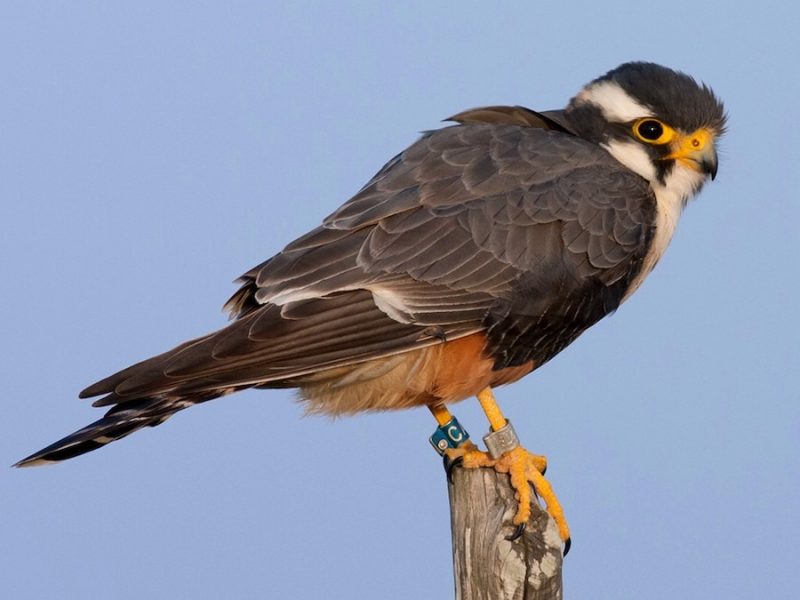
The Aplomado Falcon is a graceful and slender bird of prey that was once extirpated from the United States. Due to reintroduction efforts by conservation groups, it now has a small but growing presence in parts of southern Texas. This falcon is easily recognized by its long tail, slim profile, and bold facial pattern that includes a black “moustache” and dark chest band set against a pale breast.
It measures approximately 15 to 17 inches in length, with a wingspan reaching over 3 feet. The back is slate-gray, while the belly is rufous to orange, divided by the dark band across the chest. The falcon’s sharp, pointed wings and long tail give it speed and agility in open habitats. It often hunts by flying low over grasslands or perching on tall yuccas and power poles to scan for prey.
Aplomado Falcons are adept hunters, feeding primarily on large insects, small birds, and mammals. Unlike the Peregrine Falcon, which dives at high speeds from above, the Aplomado tends to pursue prey in low, fast chases across open terrain. Pairs maintain large territories and are often seen together, especially during courtship and nesting seasons.
In Texas, the best chances to see Aplomado Falcons are along the southern coastal plains and desert grasslands, particularly in Cameron, Willacy, and Kenedy counties. Look for them at Laguna Atascosa National Wildlife Refuge or other open conservation lands where reintroduction programs are active. Though still rare, the species is gradually reestablishing itself, offering hope for its continued presence in Texas skies.
Northern Jacana (Jacana spinosa)
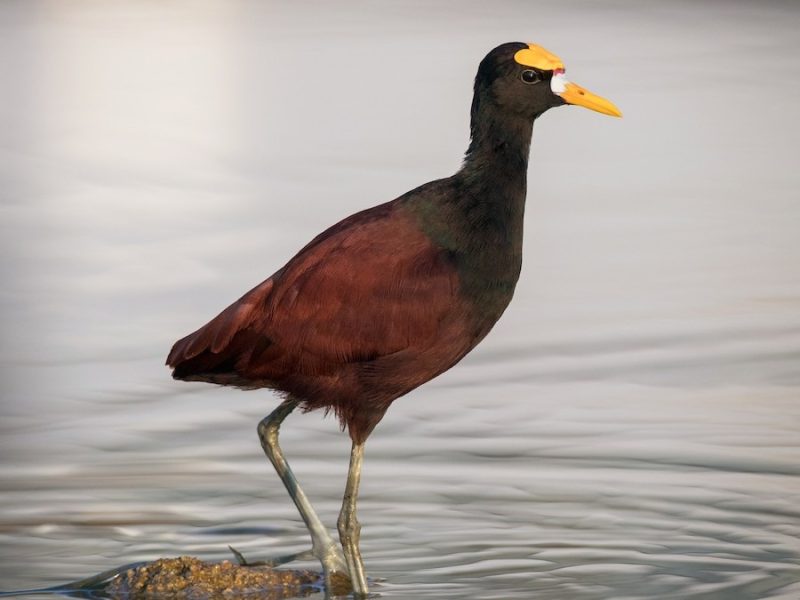
The Northern Jacana is a fascinating and exotic-looking shorebird rarely seen in the U.S., but it occasionally appears in far southern Texas, especially near Brownsville. This tropical species is most famous for its remarkably long toes, which allow it to walk on floating vegetation such as lily pads—a trait that has earned it the nickname “Jesus bird” for its apparent ability to walk on water.
It is a medium-sized bird, measuring about 8 to 10 inches in length. The body is mostly chestnut brown with black head and neck plumage, but the most noticeable features are the bright yellow facial shield and yellow-green wing patches that flash in flight. Males and females look similar, though females are typically larger and more dominant. Their bill is long and slightly downcurved, suited for picking at insects and seeds.
Jacanas live in shallow freshwater wetlands where they feed on insects, small invertebrates, and seeds found among aquatic plants. They are typically solitary or found in small groups, and their behavior is both graceful and deliberate. The species practices a rare form of mating behavior known as polyandry, where a female mates with several males who then care for the eggs and young.
In Texas, the Northern Jacana is an irregular visitor, most often seen near marshes and resacas around Brownsville, including locations like Sabal Palm Sanctuary or wetlands near the Rio Grande. Most sightings occur in spring or fall, often after tropical storms or other unusual weather events push them northward. Though extremely rare, this bird’s tropical appearance and unique habits make it one of the most fascinating finds for Texas birders.
Best Places to See Rare Birds in Texas
Lower Rio Grande Valley
The Lower Rio Grande Valley is arguably the most iconic birding region in Texas—and one of the best in North America for spotting rare and tropical birds. This subtropical corridor along the U.S.–Mexico border offers a unique blend of species not found anywhere else in the country. Top birding hotspots include Santa Ana National Wildlife Refuge, known for species like Rose-throated Becard, Northern Beardless-Tyrannulet, and Green Jay. Bentsen-Rio Grande Valley State Park is another key location, offering excellent chances to see rare visitors like the Blue Bunting or Crimson-collared Grosbeak. At Sabal Palm Sanctuary, birders can explore lush forest habitats perfect for spotting Ferruginous Pygmy-Owls and Clay-colored Thrushes.
Texas Hill Country
The Texas Hill Country is the only place in the world where you can reliably find the Golden-cheeked Warbler, an endangered species that nests exclusively in this region’s oak-juniper woodlands. Spring is the best time to observe these brilliant yellow-faced warblers as they sing and breed. The Balcones Canyonlands National Wildlife Refuge and surrounding preserves are hotspots for both Golden-cheeked Warblers and Black-capped Vireos, another threatened species with a limited range. Rolling hills, mixed forests, and quiet trails make the Hill Country a must-visit destination for birders in late spring and early summer.
Texas Coast
During spring migration, the Texas Gulf Coast becomes a magnet for rare and exhausted birds crossing the Gulf of Mexico. Areas like High Island, with its famed sanctuaries such as Boy Scout Woods and Smith Oaks, are legendary among birders for “fallouts”—moments when huge numbers of birds drop from the sky to rest. Expect to see warblers, tanagers, orioles, and sometimes rare vagrants blown in from the tropics. South Padre Island is another hotspot where mangroves, wetlands, and beachfront habitats host everything from Magnificent Frigatebirds to Groove-billed Anis. The coastal stretch from Corpus Christi to the Rio Grande is packed with rare birding surprises.
Desert Southwest Texas
The remote landscapes of Big Bend National Park and the surrounding Chihuahuan Desert offer some of the most exciting and exclusive birding in Texas. This region is home to mountain specialties rarely found elsewhere in the U.S., such as the Colima Warbler, Lucifer Hummingbird, and Gray Vireo. Birding in the Chisos Mountains or along desert arroyos can yield sightings of Zone-tailed Hawks, Scott’s Orioles, and even Montezuma Quail. The isolation and elevation changes of Big Bend create a unique blend of desert, mountain, and riparian habitats that attract both rare breeders and migratory visitors.



